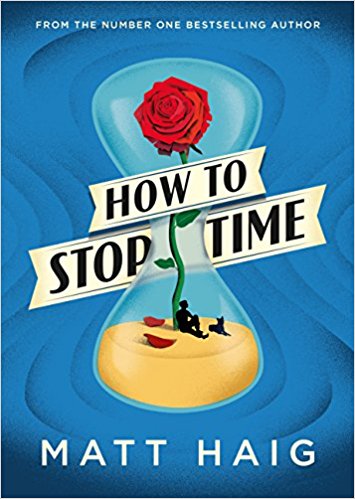Review: "How to Stop Time" by Matt Haig

Jocelyn Pontes ’18 / Emertainment Monthly Staff Writer
The usual answer, when one is asked whether they want to live longer than the average life span, is an unequivocal yes. Humanity has craved immortality, and anything that comes close to such a concept, for millennia. The idea of growing old, and confronting whatever may or may not come after, has always been our species’ greatest fear and our chief preoccupation. So naturally, when offered the possibility of longer life, we would immediately grasp for it without a second thought. However, in his novel How to Stop Time, which was released in the UK in July of last year and in the US this February, author Matt Haig makes the case against such an aspiration, and explores the not-so-rosy consequences that result when an individual lives far past one hundred years of age.
Protagonist Tom Hazard appears to be a rather aloof yet particularly ordinary history teacher and Londoner in his early forties. Anyone around him would say the same, yet none of them knows the truth. Tom was born in 1581. It was not until he reached his teenage years that he realized something wasn’t right: he had stopped aging normally. The following centuries unfolded as mere decades to him, his body betraying few signs of the sheer amount of history through which he has lived.
On the surface this situation would appear a gift, but tragedy has followed Tom from the very beginning, leading him on a course in which death becomes inevitable for all but him, and loss becomes the only true constant in his lonely, ever-changing existence. From sixteenth-century France, to Elizabethan England, and to nearly every other corner of the world, Tom has made and remade his life countless times to keep his elongated aging process hidden from society. The number-one rule, for people with his condition, is that falling in love is forbidden, because attachment of any kind will unavoidably lead to sorrow. However, Tom has broken this most crucial rule, and has spent the centuries grieving his wife, Rose, and searching across the globe for their missing daughter, Marion, who has inherited Tom’s condition.

Tom’s and Rose’s love story plays out as flashbacks within Tom’s mind, unfolding in vivid beauty. The memory of his beloved wife feels so palpable that it is hard to believe these two characters have been separated by death for centuries. The novel’s structure lends itself to this, pulling readers straight back to these moments that shimmer so brightly in Tom’s memory. The fantastical narrative that Haig creates is poignant and profound, going to the heart of why it truly is “better to have loved and lost / Than never to have loved at all.” Though the pain of perpetual loss is enormous, Tom has discovered that a life lacking in love and friendship is no less agonizing.